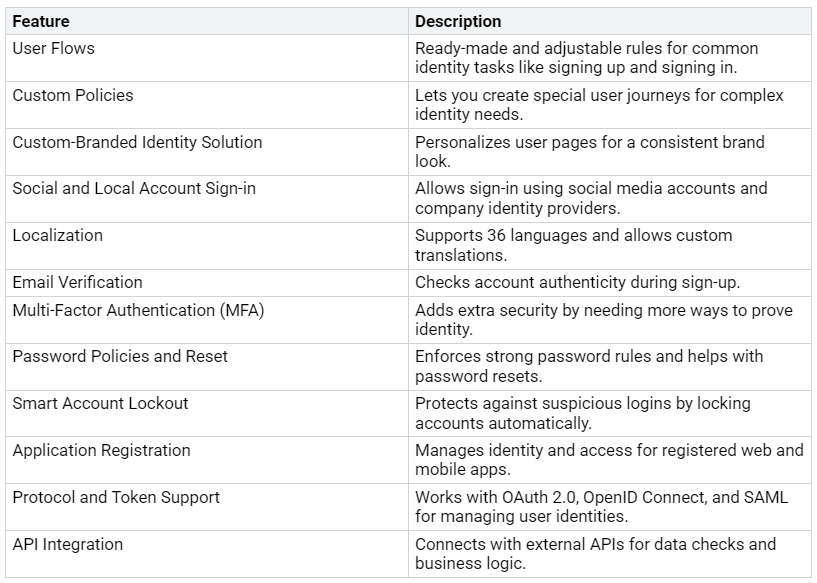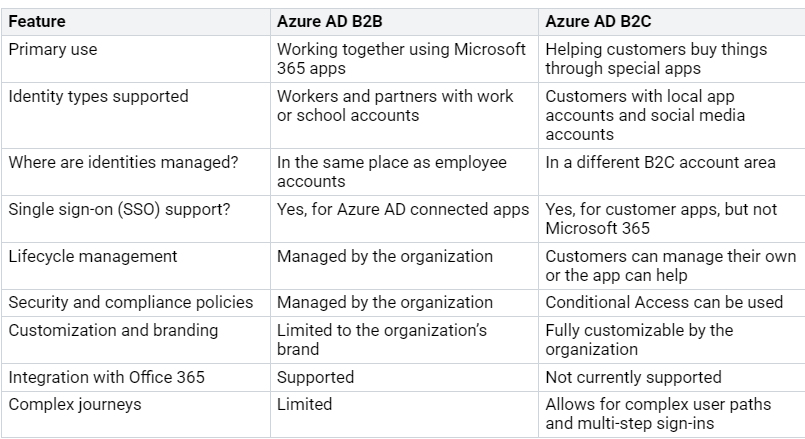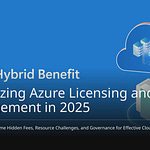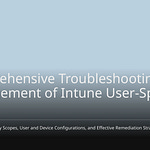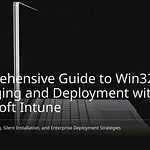In today’s online world, managing identities well is very important for your organization. Azure AD B2B is a strong tool for working with partners and vendors. This service lets you invite outside users safely into your Microsoft 365 space. By learning about Azure AD B2B, you can boost security, make workflows easier, and increase overall productivity.
Key Takeaways
Azure AD B2B helps organizations invite outside partners. They can access Microsoft 365 resources safely. This improves teamwork and security.
Azure AD B2C makes signing in easy for customers. They can use social media accounts. Customers can also manage their own profiles.
Both Azure AD B2B and B2C make security better. They have features like multi-factor authentication and conditional access policies.
Picking the right solution depends on your audience. Use B2B for partners and vendors. Use B2C for applications that customers see.
Combining Azure AD B2B and B2C can make identity management easier. This gives a better user experience and better security.
Azure AD B2B Overview
Azure AD B2B stands for Azure Active Directory Business-to-Business. It is a cloud-based identity solution. This solution helps organizations work safely with outside partners. You can invite users from other organizations to use your apps and resources. You still control what they can access. Knowing about Azure AD B2B is important for groups that work with partners. It makes security better and user management easier.
Key Features of Azure AD B2B
Azure AD B2B has many important features that make it special:
Users can access apps with their current Azure AD accounts. They do not need new passwords.
Organizations keep control over access. They can use multi-factor authentication (MFA) if they want.
Azure AD B2B helps users from different Azure AD tenants share apps.
These features help outside users work together. They also make sure your organization stays secure and follows rules. By letting outside users use their current accounts, Azure AD B2B lowers security risks. This way, you can protect your data while allowing easy teamwork.
Use Cases for Azure B2B
Azure AD B2B is very useful for big companies and global organizations. Here are some common uses:
Besides these uses, Azure AD B2B has many security features. Multi-Factor Authentication (MFA) makes users prove who they are in different ways. Conditional Access Policies set rules for who can access resources, making security stronger. Continuous monitoring for strange activities with identity protection services also boosts your security.
By using Azure AD B2B, you can save money and work more efficiently. For example, organizations can use Azure AD B2B, which they already have, to meet their security needs without extra costs. This is very important for non-profit groups. An automated onboarding process makes it easier for users and saves time. Delegated administration helps with teamwork and sharing costs among member organizations.
Knowing about Azure AD B2B is key for groups that manage outside partnerships. It allows safe sharing of resources, keeps control over access, and makes sure security rules are followed during outside work. By using Azure AD B2B, you can boost innovation and productivity while managing security risks well.
Azure AD B2C Overview
Azure AD B2C means Azure Active Directory Business-to-Consumer. It is a cloud-based identity solution for apps that serve customers. This service helps you manage customer identities and access safely. With Azure AD B2C, you can create an easy sign-in process for your users. You also keep control over their data and security.
Knowing about Azure AD B2C is very important for businesses. They want to improve how they connect with customers. Today, customers want a smooth and safe way to log in. Azure AD B2C meets these needs by offering a customizable and friendly experience.
Key Features of Azure AD B2C
Azure AD B2C has many key features that help with managing customer identities and access. Here’s a summary of these features:
These features help you create a safe and engaging experience for users. For example, customizable user journeys let you set the sign-in process, improving both security and ease of use. You can also make it easier for users by allowing different sign-in options, like social media accounts such as Facebook and Google.
Use Cases for Azure B2C
Azure AD B2C is very helpful in many industries. Here are some main uses:
In healthcare, for example, a top solutions provider used Azure AD B2C to improve security and follow rules while managing customer interactions. This shows how Azure AD B2C can boost customer engagement and loyalty.
Enhanced Security: Smart Lockout keeps user identities safe, building trust in your organization.
Seamless User Experience: It reduces problems during changes, letting real users access services easily.
Improved Customer Retention: By protecting customer identities, you build brand loyalty and trust.
In today’s digital world, Azure AD B2C is important for apps that serve customers. It supports millions of users and billions of logins each day. The platform watches for and automatically deals with threats like denial-of-service and brute force attacks. By managing identities of outside users, Azure AD B2C provides sign-in, registration, and profile management features.
With Azure AD B2C, you can offer safe, encrypted sign-ins and permissions. The service provides ready-made flows for user management and encourages using outside identities for a better user experience.
Comparing Azure AD B2B and B2C
When you look at Azure AD B2B and Azure AD B2C, you see clear differences. Each solution has its own purpose and meets different user needs.
Functional Differences
Here’s a list of the main differences between Azure AD B2B and Azure AD B2C:
Target Audiences
Knowing the target audiences for Azure AD B2B and B2C helps you pick the right solution. Here’s a summary of the main audiences:
The needs of business partners are different from those of customers. Azure AD B2B lets partners access company resources using federated identities. On the other hand, Azure AD B2C only gives access to apps without sharing company resources. This difference is important when choosing the best identity solution for your organization.
By knowing these differences, you can make smart choices about which Azure solution fits your teamwork and customer engagement goals.
Convergence of Azure B2B and B2C
Integration Possibilities
Combining Azure AD B2B and B2C gives organizations great chances. You can improve identity management by letting users log in with either B2B or B2C accounts. This choice makes the user experience much better. Here are some main benefits of this combination:
It allows federated authentication with social media, giving more access to different users.
You can manage both business and customer identities on one platform, making security and efficiency better.
Multi-tenant authentication lets many tenants access securely without sharing data.
By using these integration options, you can make your identity management easier. For example, Azure B2C handles outside customer identities with many customization choices. This helps you create unique user journeys that give special access to reports for each user.
Future Trends
The future of identity management is changing fast. Current trends show that Azure AD B2B and B2C solutions are coming together more. Microsoft is adding new features for B2B that match B2C functions better. This change means the old differences between B2B and B2C are fading away.
Microsoft Entra External ID is the next step in managing customer identity and access. This solution lets you handle different outside identities on one platform. It gives users more flexibility by letting them sign in with their favorite identities while you keep control over access through Microsoft Entra ID.
As organizations use cloud technologies, they will gain from better connections with Microsoft security tools. The focus on customer identity and access management (CIAM) will also increase, helping hybrid and multi-cloud setups. These improvements will change how you manage identities and access in the future.
In short, knowing about Azure AD B2B and B2C is very important for your organization. Each solution has different uses based on what your business needs.
Azure AD B2B helps share access between employees, vendors, and partners.
Azure AD B2C makes it easier for customers by managing their identities.
You manage users in different ways for each. B2B lets you control access, while B2C lets customers manage their own profiles. By picking the right solution, you can boost security and make user experiences smoother.
Use these identity solutions to prepare your organization for the future. This will help improve teamwork and customer connections. 🌟
FAQ
What is the main difference between Azure AD B2B and B2C?
Azure AD B2B is for working with partners and vendors. Azure AD B2C is for managing customer identities in apps. Each one meets different user needs and access rules.
Can I use social media accounts with Azure AD B2C?
Yes! Azure AD B2C lets users sign in with social media accounts like Facebook and Google. This makes it easier for users and improves the login process.
How does Azure AD B2B improve security?
Azure AD B2B makes security better with tools like multi-factor authentication (MFA) and conditional access policies. These features help you control who can access your resources and how they do it.
Is it possible to customize the user experience in Azure AD B2C?
Absolutely! Azure AD B2C lets you change user journeys. You can adjust sign-up and sign-in steps to fit your brand and what users want.
How do I choose between Azure AD B2B and B2C?
Think about your audience. Use Azure AD B2B for partners and vendors who need access to your resources. Pick Azure AD B2C for apps that customers use, which need identity management.



